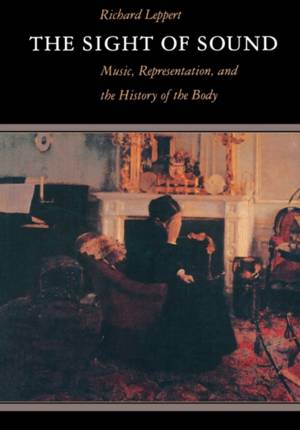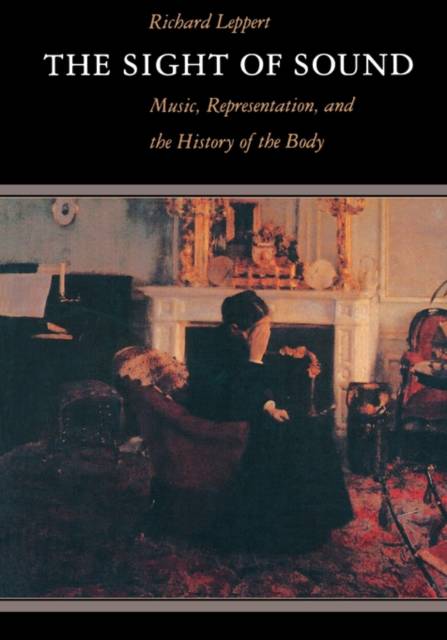
- Afhalen na 1 uur in een winkel met voorraad
- Gratis thuislevering in België vanaf € 30
- Ruim aanbod met 7 miljoen producten
- Afhalen na 1 uur in een winkel met voorraad
- Gratis thuislevering in België vanaf € 30
- Ruim aanbod met 7 miljoen producten
The Sight of Sound
Music, Representation, and the History of the Body
Richard Leppert
Paperback | Engels
€ 48,45
+ 96 punten
Omschrijving
Richard Leppert boldly examines the social meanings of music as these have been shaped not only by hearing but also by seeing music in performance. His purview is the northern European bourgeoisie, principally in England and the Low Countries, from 1600 to 1900. And his particular interest is the relation of music to the human body. He argues that musical practices, invariably linked to the body, are inseparable from the prevailing discourses of power, knowledge, identity, desire, and sexuality.
With the support of 100 illustrations, Leppert addresses music and the production of racism, the hoarding of musical sound in a culture of scarcity, musical consumption and the policing of gender, the domestic piano and misogyny, music and male anxiety, and the social silencing of music. His unexpected yoking of musicology and art history, in particular his original insights into the relationships between music, visual representation, and the history of the body, make exciting reading for scholars, students, and all those interested in society and the arts.
With the support of 100 illustrations, Leppert addresses music and the production of racism, the hoarding of musical sound in a culture of scarcity, musical consumption and the policing of gender, the domestic piano and misogyny, music and male anxiety, and the social silencing of music. His unexpected yoking of musicology and art history, in particular his original insights into the relationships between music, visual representation, and the history of the body, make exciting reading for scholars, students, and all those interested in society and the arts.
Specificaties
Betrokkenen
- Auteur(s):
- Uitgeverij:
Inhoud
- Aantal bladzijden:
- 345
- Taal:
- Engels
Eigenschappen
- Productcode (EAN):
- 9780520203426
- Verschijningsdatum:
- 15/10/1995
- Uitvoering:
- Paperback
- Formaat:
- Trade paperback (VS)
- Afmetingen:
- 174 mm x 255 mm
- Gewicht:
- 707 g

Alleen bij Standaard Boekhandel
+ 96 punten op je klantenkaart van Standaard Boekhandel
Beoordelingen
We publiceren alleen reviews die voldoen aan de voorwaarden voor reviews. Bekijk onze voorwaarden voor reviews.










